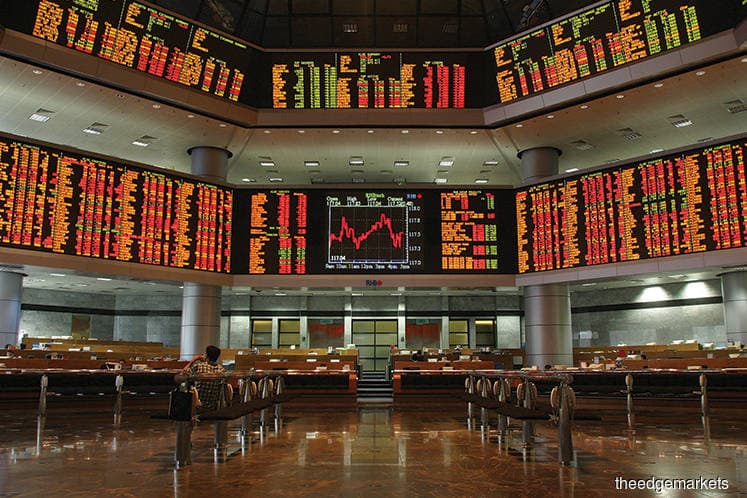
This article first appeared in The Edge Financial Daily on August 14, 2019
KUALA LUMPUR: Regional sentiment turned bearish yesterday amid mounting concerns over the trade war. In addition, the escalating political tension in Hong Kong and long absence of domestic catalyst did not help either.
In line with the downtrend in Asia, Bursa Malaysia’s benchmark the FBM KLCI dipped below the 1,600 critical support level for the second time this year. It breached the 1,600-level on May 27.
At the closing bell, the KLCI lost 22.17 points or 1.37% to close at 1,592.88 points — the lowest level since September 2015.
Trading volume remained relatively low at 2.19 billion shares worth RM1.69 billion, indicating waning interest amid lack of buying impetus.
By the same token, the saving grace, according to Phillip Capital Management Sdn Bhd chief investment officer Ang Kok Heng, is that there was no panic selling yesterday as reflected in thin trading volume.
“Lower volume when the market is down is healthy,” Ang told The Edge Financial Daily, explaining that when the volume is low means sellers are not aggressive.
Noting that the market is still very much affected by the strength of the US dollar, Ang noted that the upside catalysts for KLCI are external factors for instance a weaker US dollar, trade war truce, and domestically. Furthermore, he commented that investors are still awaiting the government to announce specific incentives and strategies to drive economic growth. Political certainty would also help, he added.
MIDF Research head of research Mohd Redza Abdul Rahman concurs, saying that the heightened uncertainties due to trade war and geopolitical stress, necessitates the sell-off in equities market with funds flocking to safe havens.
“So far the second quarter [ended June 30] corporate results season have been mixed but none so far, under our coverage, have beaten ours and consensus estimates,” said Redza, adding that there was expectation of weaker earnings performance among exporters as a result of the trade dispute between the US and China.
While MIDF Research has pegged its KLCI year-end target at 1,720, Redza said there could be a possible downward revision on the KLCI target after the end of results season, given expected challenges on the earnings front.
Nevertheless, he said disappointments will be slightly mitigated by the ringgit translation gains from companies with high export revenue such as gloves and plantations with the crude palm oil futures having retrace upwards to RM2,187 per tonne level.
“With the 1,600 fails to hold, we expect further weakness in view of the rising political tension in Hong Kong and the prolonged Sino-US trade war,” said Malacca Securities Sdn Bhd senior analyst Kenneth Leong.
Leong also said the weakness in local currency has also led to foreign funds to shy away from local equities. Up to last Friday, Leong added that foreign funds have exited a total of RM6.01 billion worth of Malaysia equities.
“Should the ringgit of 4.20 against the US dollar be breached, we expect the ringgit to slide towards the 4.30 level,” said Leong. As at the time of writing, the ringgit weakened 0.29% to 4.1962 against the greenback.
The potential upside catalyst for the KLCI includes the two world’s largest economies, China and the US, coming into a trade truce.
“On the local front, we need to monitor on the allocations under the coming Budget 2020 that is scheduled to announce in early October to assess the key beneficiary sectors,” said Leong, adding that a recovery in both crude oil and crude palm oil prices will provide some alleviation on the Malaysia market.
Meanwhile, Stephen Soo, senior technical analyst at TA Securities, said the market breadth is very weak, suggesting that the increased foreign selling amid turmoil in global markets.
Soo noted that the research house is looking at a forecast of 1,700 at end-2019, with immediate crucial support now at 1,588 and 1,577 points.
“[The] weak ringgit is definitely a major factor triggering sell-off,” said Soo, noting that the ringgit is now mirroring the Chinese yuan movement, which in turn is now in a currency war or trade war with the US.